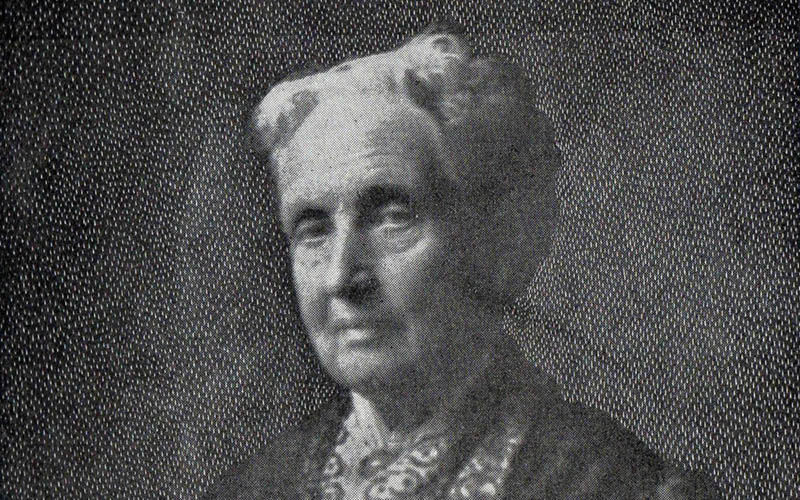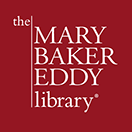Women of History: Alice B. Stockham

Portrait of Dr. Alice B. Stockham, 1911. Unknown photographer. Image from Tokology by Alice Stockham.
Alice B. Stockham (1833–1912) was an author, physician, and suffragist. A contemporary of Mary Baker Eddy, she first explored Christian Science in 1883. Both women shared the motive of promoting health and healing. At the same time, Stockham’s methods diverged from Eddy’s and help to illustrate the essential distinction between Eddy’s radical Christianity and the eclectic teachings of mind-cure, or New Thought, which Stockham went on to embrace.
Born Alice Bunker in Cardington, Ohio, she was raised a Quaker in Hastings, Michigan. Her parents, Slocum H. and Matilda F. Bunker, practiced the Thompsonian method of botanical medicine. In a 1912 address, Stockham recalled that they would “treat the sick for miles around.”1 The Thompsonian school was one of many approaches to medicine and healthcare in a freewheeling marketplace, where various alternatives competed on a more or less equal footing for both patients and scientific respectability. Exposure to these wide-ranging approaches greatly impacted the subsequent thinking of Stockham and Eddy, albeit in different ways.
Stockham trained as a teacher at Olivet College in central Michigan. After graduating she studied at the Eclectic Medical Institute (EMI) in Cincinnati, Ohio, where she met Gabriel H. Stockham. They married in 1856 and practiced together in Indiana, Missouri, and Illinois. When she obtained her medical degree from the Chicago Homeopathic Medical College in 1892, Stockham became a licensed physician in Illinois—and only the fifth woman in the United States to earn an M.D.2
Stockham investigated Christian Science while living in Chicago. “Please give all the information you can to one who is always interested in truth & progress,” she wrote to Eddy.3 Their brief correspondence began shortly after Stockham had finished writing Tokology, her guide to gynecology and midwifery. She was keen for Eddy’s input on applying Christian Science to her work in support of women’s health.
“I have for years been interested in unmedical measures that remove disease without the use of drugs,” she told Eddy. “I would like to know more of your philosophy – not with the expectation of practicing for I am now interested in publishing health books my own and others.”4 She also offered to act as a sales agent for Eddy’s book Science and Health with Key to the Scriptures, though there is no record of Eddy agreeing to this. At Stockham’s request she did send copies of the book, as well as her Historical Sketch of Metaphysical Healing, to showcase at the “Woman’s Work” exhibit of the 15th Chicago Interstate Industrial Exposition in 1887.5
While Stockham did not study Christian Science with Eddy, correspondence suggests that she took classes with Eddy’s student Roger Sherman in Chicago. But her interest in Christian Science was short-lived. Perhaps it didn’t align with her concept of “unmedical measures.” Stockham may have assumed that Christian Science was a variety of mind-cure that could be combined with her own ideas. But that was not the case. Mind-cure looked to the human mind as the healer, the “god within.” According to historian Stephen Gottschalk, “New Thought writers generally conceived of the human mind as the medium of Deity” 6 On the other hand, Eddy was convinced that while the nature of disease was mental, the unaided human mind could not cure the suffering it engendered. Instead, that limited mind with all its debris had to yield to the cleansing action of the divine Mind, God.
Stockham’s exploration of psychological factors in medical practice evidently continued when she studied with New Thought teacher Emma Curtis Hopkins, a former student of Eddy’s who had broken with her in 1885. Stockham remained a disciple of Hopkins and wrote for periodicals like The Christian Metaphysician, The Nautilus, and Life: A Monthly Magazine of Christian Metaphysics.
In 1897 Stockham founded the Vrilia Heights Metaphysical School in Williams Bay, Wisconsin, and continued to author books on women’s health and marriage, including Karezza (1896) and The Lover’s World (1903). In 1905 she was indicted under the Comstock Laws, for “sending improper matter through the mails,” after a postal inspector obtained a copy of her pamphlet Wedding Night. It discussed marital relations and was written for a young adult audience. Despite the efforts of her attorney—the renowned criminal defense lawyer Clarence Darrow—as well as a supportive press, she was found guilty and fined $250, and her publications on marriage were banned. The cost of the trial forced Stockham to sell Vrilia Heights. She moved to California and lived with her daughter until her passing.
To read Alice B. Stockham’s 1883 letters to Mary Baker Eddy, please visit mbepapers.org.
- “City of Hastings Named After Early Detroit Banker,” Battle Creek Enquirer, March 24, 1974.
- A Woman of The Century: Fourteen Hundred-Seventy Biographical Sketches Accompanied by Portraits of Leading American Women (Buffalo: Charles Wells Moulton, 1893), 690.
- Alice B. Stockham to Mary Baker Eddy, 12 September 1883, IC 714b.86.033.
- Stockham to Eddy, 19 September 1883, IC 714b.86.034.
- Stockham to Eddy, 9 August 1887, IC 970.95.061.
- The Emergence of Christian Science in American Religious Life (Los Angeles: University of California Press, 1973),122.

